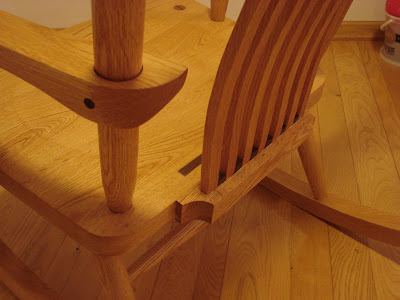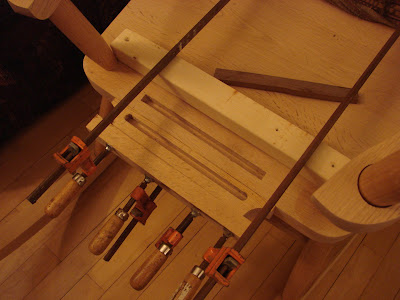 |
| Twenty three pieces of oak, not counting the numerous walnut wedges, spacers and dowels that I will use when assembling the chair. |
 |
| Sanding a leg on the lathe. |
 |
| Attaching the rockers. |
 |
| Walnut wedges and wood glue |
 |
| Driving a wedge at right angles to the grain of the armrest. Driving it parallel to the grain would risk splitting the armrest. |
 |
| Everything glued up, with the exception of the back slats which are sliding loose in the slots in the seat and headrest. |
 |
| You don't. You draw attention to it by filling it with a piece of contrasting wood and turn it into a design feature. |
 |
| If I hadn't told you why that strip of walnut was there, you probably would have thought it was just a bit of decoration. |
 |
| The armrest is secured to the back support with a dowel. |
 |
| Walnut spacers hold the back slats in position. |
 |
| End grain |
 |
| Loch Ness monsters |
 |
| The joint between the leg and the rocker is reinforced with a dowel. |







Excellent Work. Looking Beautiful...
ReplyDelete